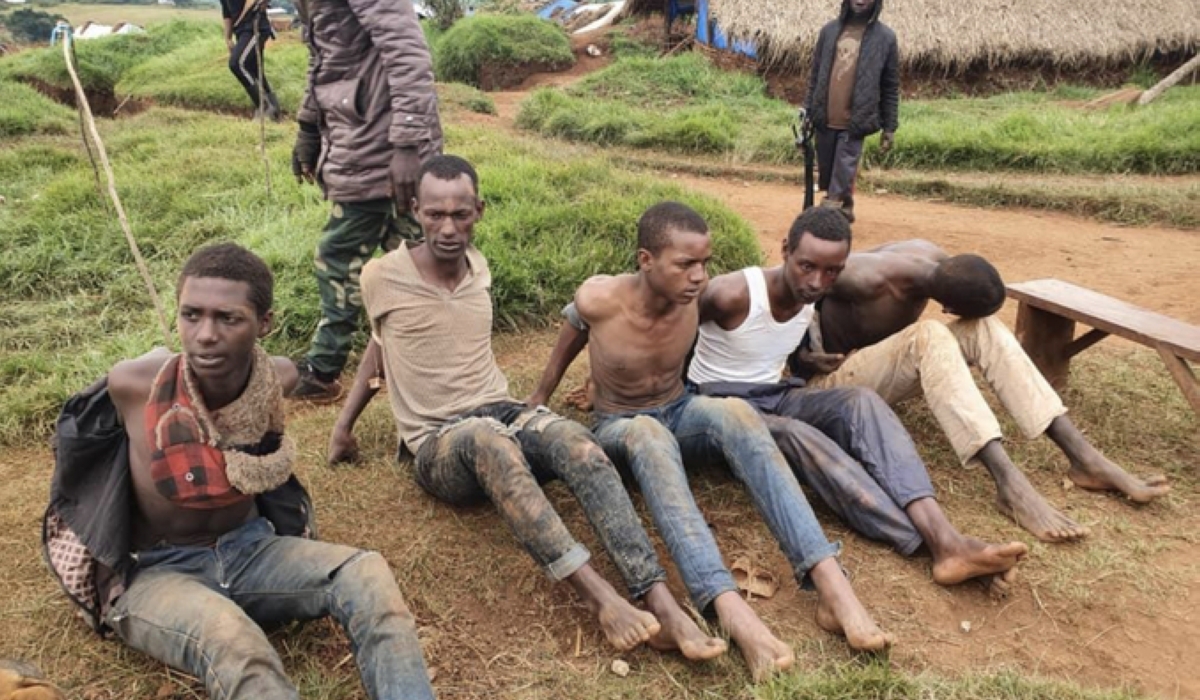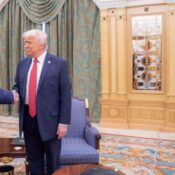
Addressing the Great Lakes region’s Genocide Ideology: Dissecting the past, facing the present, and fostering peace
In Africa’s Great Lakes region, especially in Rwanda and the Democratic Republic of the Congo (DR Congo), genocide ideology remains a danger to peace and stability. This ideology, which has its roots in Europe’s colonial past, is supported by racist discourses, and is still being spread now through political rhetoric and violence, needs to be destroyed immediately.
This article explores the origins, development, and current expressions of genocidal ideology and provides strategies for effectively addressing and countering it.
The roots of violence in colonialism
The corrosive spread of genocide ideology is framed by the common history of Rwanda, Burundi, and the Democratic Republic of the Congo—all of which were formerly ruled by Belgium.
Identity cards and formal hierarchies that racialized the Hutu, Tutsi, and Twa populations were used to weaponize ethnicity throughout the colonial era, especially in the 19th century. These divisions served as instruments of oppression, laying the groundwork for future acts of violence and systematic discrimination, rather than only being documented.
The Berlin Conference of 1884–1885, in which colonial powers defined African frontiers arbitrarily, further uprooted communities and formalized ethnic division. Deeply ingrained in the colonial language of “us versus them”—what academic Valentin Mudimbe referred to as “the invention of Africa”—this framing encouraged violence and dehumanization as the principles that governed African civilizations under European inspection.
Colonial continuities: From physical to verbal abuse
Colonial violence was not just physical; it started as discursive violence, in which Africans were portrayed as violent and inferior through language, images, and narrative. Early written captions, images, and museum exhibits conditioned viewers in Europe to view colonial violence as an essential part of “civilization.”
This deeply ingrained colonial mindset is reflected in iconic acts of brutality, such as the death of Patrice Lumumba and the mutilation of Congolese by missionaries. These behaviors were not unusual; rather, they were manifestations of a fabricated worldview that portrayed Africans as objects to be subdued through violent means.
1994 Tutsi genocide and the influence of denial
Decades of political manipulation, prejudice, and misinformation culminated in the 1994 massacre against the Tutsi. Early warnings were given as early as 1964, and the Tutsi community in Rwanda was deliberately targeted starting in the 1950s. The world, meanwhile, remained mainly unconcerned.
Concerns of planned mass murders were raised by influential people including Jean Carbonare in 1993 and General Roméo Dallaire in early 1994. These appeals were not accepted by international organizations, including the Clinton administration, which refused to call the crimes “genocide.” Both during and after the murders, this denial has come to be seen as a hallmark of the mindset behind genocide.
Genocide denial is the practice of excusing, downplaying, or disregarding the facts by relatives of perpetrators, their ideological allies, media, and even academia. This undercuts attempts at justice and reconciliation while sustaining the long-term dehumanization of Tutsis.
Speaking dangerously and normalizing hatred
Language is one of the most pernicious instruments of genocide ideology. In a 1992 speech, Rwandan politician Leon Mugesera used rhetoric that referred to Tutsis as “foreigners” and “invaders,” and he advocated for their expulsion, which would be symbolized by massacres and their relocation over the Nyabarongo River, which is said to be the quickest route back to Ethiopia. Susan Benesch refers to this type of communication as “dangerous speech” because it encourages people to believe that violence is not only acceptable but also essential.
According to Benesch, analogies that compare targets to “cockroaches” or “bacteria” undermine empathy and resemble allegations that paint the Tutsi, the victim group, as the aggressors. By eliminating moral restraints on crimes, this manipulation normalizes genocide in the minds of the people.
DR Congo’s current philosophy of genocide
The idea of genocide persists and expands throughout the eastern Democratic Republic of the Congo, despite Rwanda’s efforts to keep it contained within its borders. The conflict provides a contemporary platform for the revival of traditional beliefs in Goma and, more recently, in North Kivu. Long-term operations were carried out by international humanitarian groups like as USAID and Doctors Without Borders, who provided aid but did nothing to address the underlying issues.
As a continuation of colonial voyeurism, their presence in refugee camps such as Mugunga signifies a kind of passive surveillance of African misery. A terrible example of normalized dehumanization is the existence of children growing up in prisons like Munzenze and learning about “summer vacations” behind bars.
The function of local partnerships and the global community
The Congolese army, which has incorporated members of the FDLR—the same organization that carried out the 1994 genocide against the Tutsi—works closely with international actors in the Democratic Republic of the Congo, including MONUSCO and SAMIDRC.
Furthermore, mistrust and instability have been exacerbated by European mercenaries’ coordination with MONUSCO and the FARDC.
These connections have strengthened those who support genocidal ideology rather than opposing it. In November 2023, for example, a coalition of the FARDC, FDLR, MONUSCO, Burundian soldiers, and international mercenaries attacked a displaced persons camp in Bwiza that housed 17,000 inhabitants. To stop mass atrocities, M23 stepped in.
Under the garb of justice and security, economic interests
Recognizing the region’s economic significance is essential to comprehending why genocide mentality persists. Rubaya and other coltan mines have turned into geopolitical hotspots. Allegedly, the Congolese government partnered with the South African-led SADC forces in return for mining rights—a transaction that links violence to financial gain.
By depicting Tutsi and M23 militants as “foreign invaders” or “mineral plunderers,” these coalitions serve to perpetuate harmful myths. Officials who combine hate speech with state policy, such as Patrick Muyaya and Constant Mutamba, frequently use these expressions. Denis Mukwege, the Nobel Peace Prize recipient, has come under fire for promoting the idea of “plundering,” which is in line with colonial stereotypes that diminish Tutsi identity.
Academic collusion, civic society, and the media
Jason Stearns and other Western researchers and journalists have come under fire for using scholarly language and reporting to promote genocide ideology. By spreading phrases like “Banyarwanda bote barudiye kwabo,” which calls for Tutsis to “return” to Rwanda, civil society organizations like LUCHA incite hatred by depicting them as foreigners in their homelands.
These stories are not unique. From press releases to peacekeeping missions, they permeate popular discourse by portraying the Tutsi as invaders, aggressors, and destabilizers in their own country.
Reliving the past: Contemporary pogroms
Genocide ideology is not just rhetoric, as evidenced by recent crimes such as the lynchings in Luhihi in January 2024 and the October 2023 attack on Nturo. Physical violence expressly targeted at Congolese Tutsis is one way it shows up. Using slogans made popular by so-called civil society movements, several lynchings and the burning of civilians’ property occurred.
Regional and indigenous solutions: involvement and education
Homegrown and regional remedies based on communal healing, education, and cultural restoration are necessary to counter genocide ideology.
Practices like umuganda (community service) and kitamadun (political education through songs encouraging unity and accountability) provide models based on Rwanda’s post-genocide recovery.
Similar strategies have been used by M23 combatants. Soldiers like “Afande Mandela” act out skits in M23-controlled areas in which hatred, tribalism, and corruption are portrayed as illnesses that need to be cured together. Speaking to the people of Luhihi, Colonel Julien Mahano reiterated these remarks and reaffirmed M23’s fundamental objective: to eradicate, not to incite, the mentality of genocide.
Toward a Pan-African response, in conclusion
If genocidal mentality is not stopped, the Great Lakes region will remain unstable. It is tragic and a call to action that the atrocities of 1994 are being repeated in the Democratic Republic of the Congo. A society that has emerged from the ashes of genocide to promote justice, togetherness, and global peacekeeping leadership, Rwanda provides a paradigm-shifting example.
Rwanda’s role in bringing about peace in South Sudan, Mozambique, and Central Africa, as General Ronald Rwivanga has said, demonstrates that ethical, African-led military action and civic involvement can bring about enduring peace. Africa and the international community must now decide to prioritize action over rhetoric and peace over profit.
Sustainable peace can only be sought, formed in justice, and guaranteed by collective will by addressing the ideology of genocide, which has its roots in colonial past and thrives in contemporary conflict.
All Categories
Recent Posts
Tags
+13162306000
zoneyetu@yahoo.com



